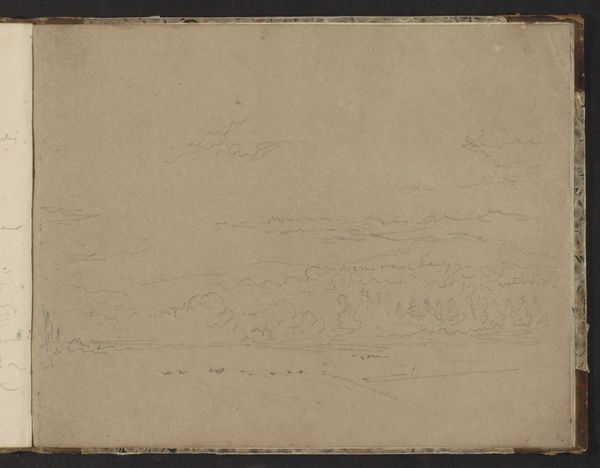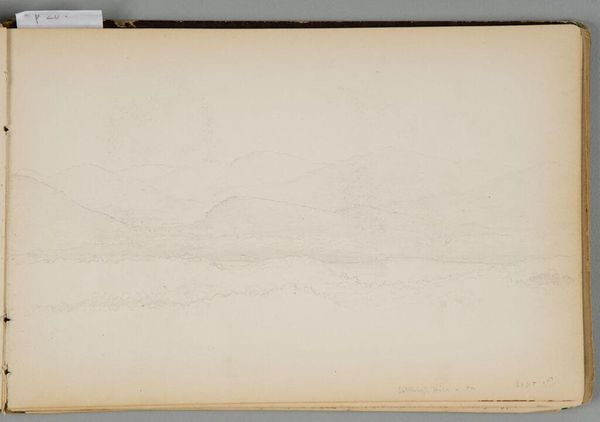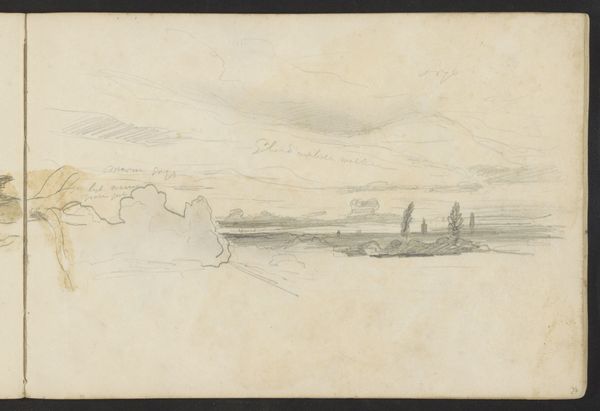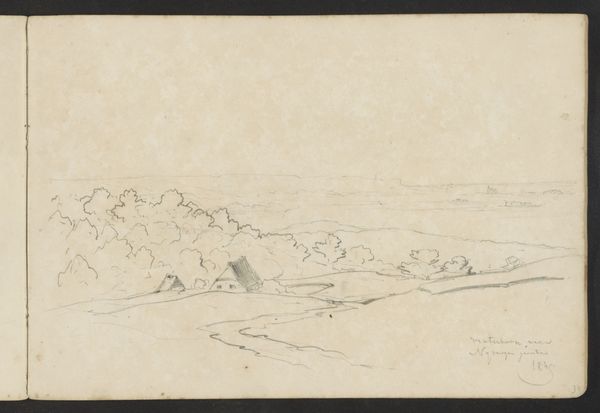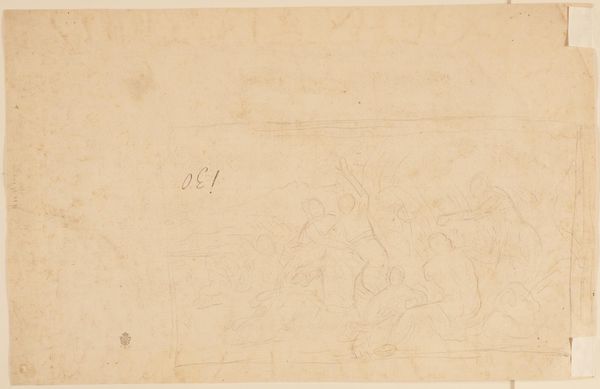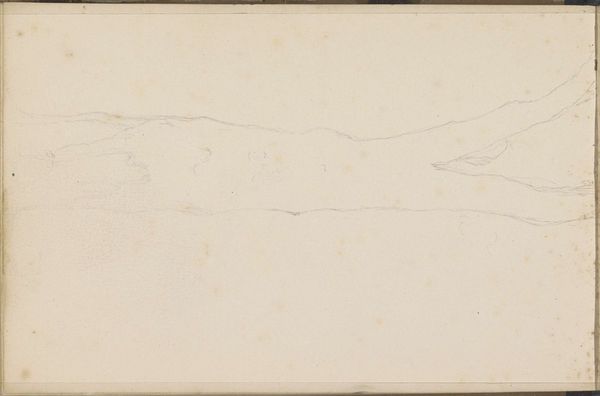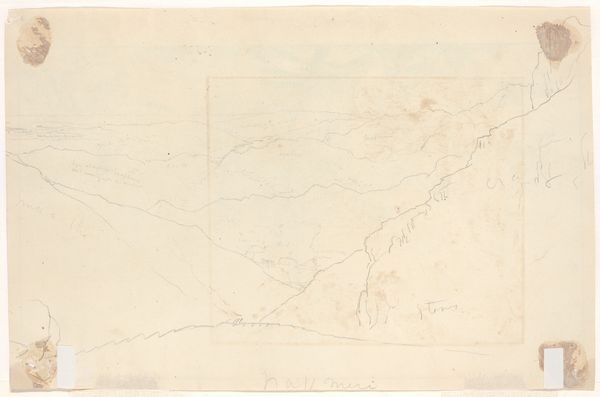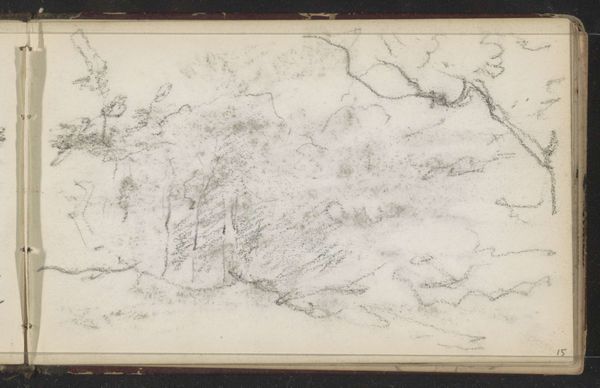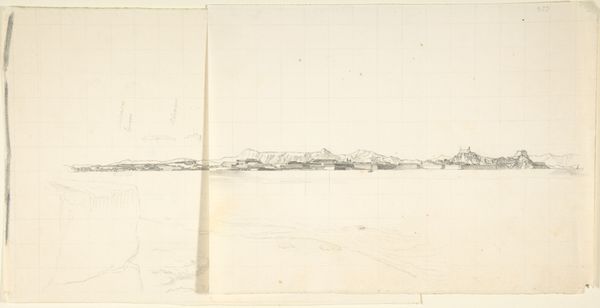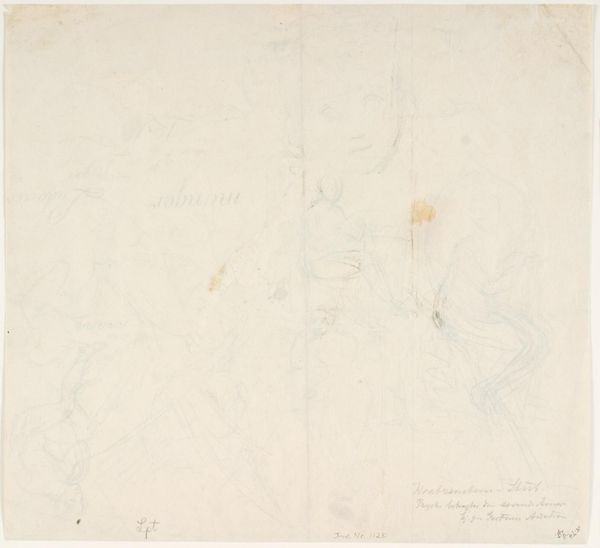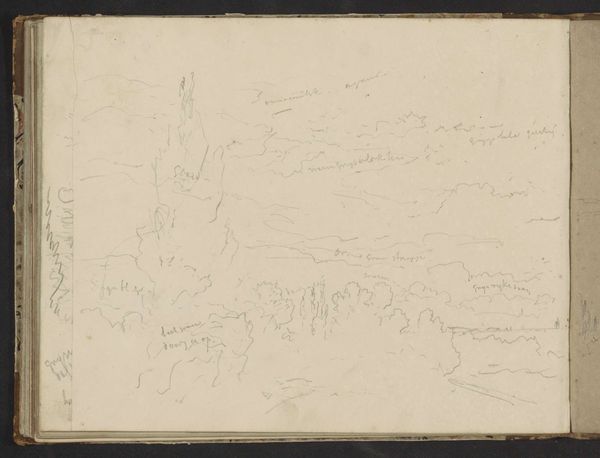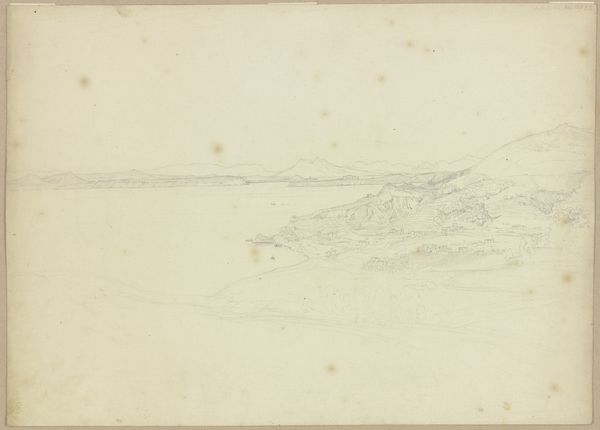
drawing, paper, pencil
#
drawing
#
landscape
#
paper
#
coloured pencil
#
romanticism
#
pencil
Copyright: Rijks Museum: Open Domain
Curator: Before us, we have a landscape drawing titled "Landschap" created around 1840 by Johannes Tavenraat. It’s crafted with pencil and colored pencil on paper. Editor: Oh, it's subtle! At first glance, almost dreamlike. The wispy lines and soft colours… I get a sense of stillness, like a hush has fallen over everything. Curator: Exactly. The piece epitomises the Romantic movement's fascination with nature. During that period, there was this shift toward a more subjective, emotional response to the world, in contrast to Enlightenment rationalism. Nature was perceived as sublime, powerful, and untamed. Editor: Yeah, you feel that untamed aspect here, even in its… gentleness? It's less about conquering the landscape, more about observing and feeling a connection. I keep thinking of dawn breaking—all possibility and fragile light. It feels like a fleeting moment captured. Curator: The drawing employs a very delicate hand. Think about what it meant to depict landscapes then. Industrialization was rapidly altering the world. Representing unspoiled nature served as both a form of escapism and, implicitly, a critique of that industrial encroachment. These artists aimed to capture something disappearing, perhaps. Editor: That gives it a layer of melancholy, right? It's not just a pretty scene, but a… plea. I’m looking at those barely-there hills and thinking of all the labour and resources hidden beneath them. Was he aware of those tensions, do you think? Curator: Absolutely, it's almost impossible to consider the works of the time separately from such developments. Romanticism was itself embedded in social upheaval, like revolutions that encouraged new political awareness. "Landscape" reflects these tensions: quiet beauty on the surface concealing socio-historical struggles. Editor: You’ve given me a lens that's not just about aesthetics; this piece becomes this loaded quiet rebel, standing against time, industry and maybe societal change... it does draw you into its quiet revolution, or revelation, doesn’t it? Curator: Precisely. Now, consider how the seemingly simple act of depicting landscape becomes, when viewed through the lens of its socio-political circumstances, an act brimming with intersectional meaning. Editor: Huh, I came for a landscape, but I think I found a whole history class, a manifesto and a poem hiding between the lines. How beautifully sneaky!
Comments
No comments
Be the first to comment and join the conversation on the ultimate creative platform.

